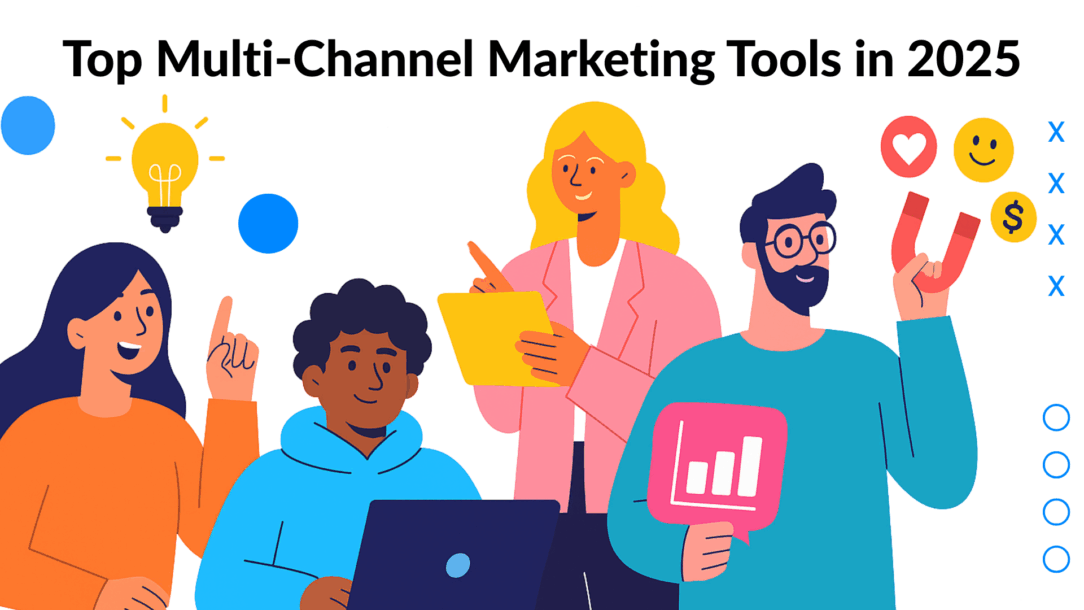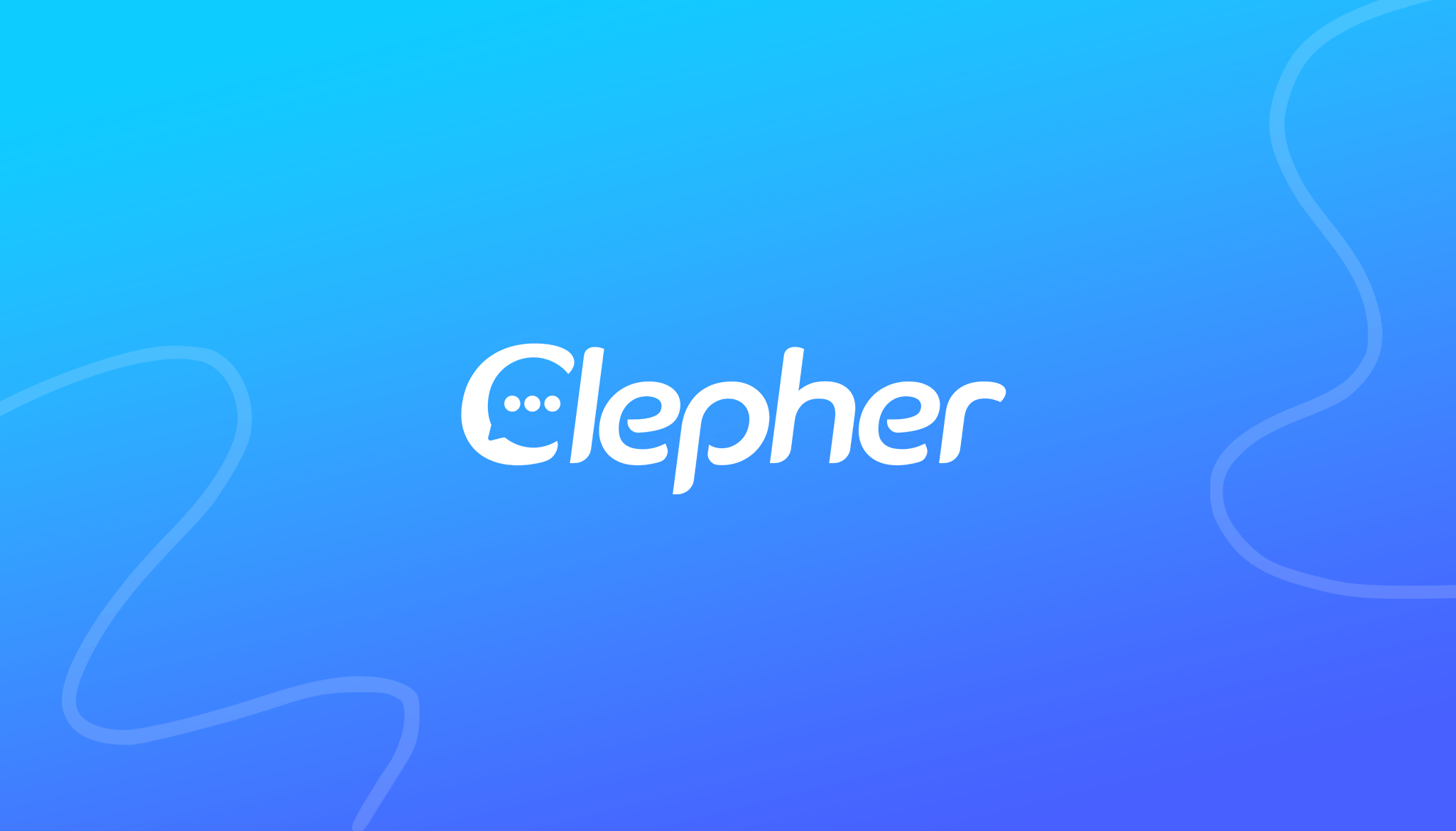Now we will discuss multi-channel marketing tools that will skyrocket your leads across channels.
But first things first. Ever feel like you’re everywhere but nowhere at the same time?
You post on Instagram.
Run a Google Ad.
Maybe send an email.
But results? Meh.
Here’s the truth: Customers don’t live on one channel.
They bounce from Facebook to YouTube. From Google search to email.
From TikTok to WhatsApp.
And if you’re not there too?
You lose them.
That’s why multi-channel campaigns crush it.
In fact, brands using 3 or more channels see 287% higher purchase rates compared to single-channel campaigns.
But there’s a catch. Managing all those platforms manually? A nightmare. Time wasted.
Money burned. Opportunities lost.
The good news?
You don’t have to do it the hard way.
With the right tools, you can:
✅ Automate campaigns
✅ Keep messaging consistent
✅ Track results in one place
In this post, we’ll break down the best multi-channel advertising tools for 2025.
The ones smart marketers are already using to save time and scale faster.
Why Tools Matter in Multi-Channel Marketing
The truth is, managing a single campaign on Facebook is tough enough. Add Google Ads, TikTok, Instagram, LinkedIn, email, and SMS on top of it? That’s not marketing anymore—that’s a circus.
Without the right tools, you’re left:
- Logging into 5 different dashboards.
- Copy-pasting the same data across spreadsheets.
- Guessing what’s working and what’s wasting budget.
That’s not scale. That’s survival.
Now, look at the numbers:
- Companies that use automation tools see up to 77% higher lead conversions.
- Businesses with integrated marketing stacks generate 2.5× higher ROI than those running siloed campaigns.
- And here’s the kicker: nearly 70% of marketers say they’re overwhelmed by managing multiple platforms without tools.
So the question is—why fight uphill?
Multi-channel advertising only works when everything connects. You need one place to track performance, one system to keep messaging consistent, and one setup that saves you hours instead of adding more work.
The tools you choose will decide whether your campaign is just “busy work”… or a profit machine.
And in 2025, with AI, automation, and smarter ad platforms, the gap between businesses that use tools and those who don’t is wider than ever.
What Makes a Great Multi-Channel Advertising Tool?
Before we dive into the list, let’s set the standard. Not every shiny app or platform qualifies as a real multi-channel advertising campaign tool. Some are just “nice-to-haves.” Others are essential for survival.
So, what makes a tool worth your time (and budget)? Three things:
- Integration – Your customers move between channels. Your tools should too. A great platform connects Facebook Ads, Google, TikTok, email, SMS, and chatbots—without you playing middleman.
- Automation – Repetitive tasks kill growth. Whether it’s retargeting across channels, following up leads, or syncing data, the best tools let you set it once and scale.
- Data + Insights – Running ads without proper reporting is like flying blind. You need tools that don’t just track clicks—but show you what’s converting, where money is leaking, and how to optimize campaigns.
- Scalability – A tool should grow with you. Today, you may be running 3 channels. Tomorrow it could be 7. The right system won’t break when you scale.
How to Choose the Right Multichannel Marketing Tool
Picking the right tool can feel overwhelming. Dozens of platforms. Hundreds of features. All promising “growth.” But the wrong choice? It’ll eat your time, budget, and energy.
Here’s how to choose without second-guessing yourself:
1. Start With Your Goal
Most businesses shop backwards. They look at tools first, then try to squeeze them into their strategy. That’s a mistake.
Instead, ask: Am I optimizing for awareness, conversions, or retention?
- Awareness → scheduling and publishing tools (Hootsuite, Buffer).
- Conversions → analytics + automation (GA4, Zapier, Clepher).
- Retention → lifecycle tools (Klaviyo, Omnisend).
2. Look Beyond Features—Focus on Integrations
Fancy dashboards don’t drive sales. Connected systems do.
When you evaluate a tool, ask:
- Will it sync with your CRM?
- Can it push leads into email or SMS?
- Does it integrate natively, or at least through Zapier?
If it doesn’t play well with others, it’ll slow you down.
3. Ease of Use Matters More Than You Think
A tool is only as good as the team actually using it.
- Short learning curve.
- Clean interface.
- Templates or drag-and-drop workflows.
Example: Clepher’s visual chatbot builder means you can launch campaigns in hours, not weeks. No coding, no bottlenecks.
4. Think About Tomorrow (Not Just Today)
Your campaigns won’t stay small forever. The right tool should scale with you.
Ask yourself:
- Can it handle 2 channels now and 7 later?
- Does the pricing still make sense as you grow?
- Will I outgrow it in six months?
Tools should feel like a growth partner, not a short-term fix.
5. Support & Community Are Underrated
When you’re stuck the night before a launch, customer support is everything.
Good tools to invest in:
- Fast, reliable support.
- A community of users sharing tactics.
- Frequent updates, not “set it and forget it.”
Clepher, for instance, backs its chatbot platform with an active support team and training resources — making sure marketers aren’t left guessing.
Bottom line: the “best” multichannel marketing tool isn’t the most popular one. It’s the one that aligns with your strategy, integrates with your stack, and grows with your business.
Quick 5-Question Checklist
Before locking in a tool, ask yourself:
- Does this tool align with my #1 marketing goal right now?
- Will it integrate smoothly with my existing stack (CRM, email, ads)?
- Can my team actually use it without weeks of training?
- Will it still make sense as we scale in size and budget?
- If things break, do I have support I can count on?
If you can’t answer “yes” to at least 4 out of 5, keep looking.
Top Multichannel Advertising Tools You Should Be Using in 2025
1. SEMrush – For Smart Data & Organic Visibility
Paid ads get clicks. But organic search builds long-term trust. SEMrush is still the go-to for SEO insights, but in 2025 it’s become more than just keywords.
What it does:
- Tracks rankings across Google, Bing, and even YouTube.
- Shows you what your competitors are ranking for—and where they’re vulnerable.
- Helps you optimize content clusters, backlinks, and technical SEO.
Why it matters in multi-channel campaigns:
When you’re running ads on Facebook or Google, you need to know what people type when they’re not clicking ads. SEMrush closes that gap. A user who sees your ad today might Google you tomorrow. If you don’t show up, you’ve lost them.
Pro tip: Pair SEMrush keyword insights with ad copy testing. It keeps your paid and organic campaigns speaking the same language.
2. Hootsuite – Social Scheduling & Listening Made Simple
Social isn’t one platform anymore. It’s Instagram + TikTok + Facebook + LinkedIn + X (Twitter). If you’re posting manually, you’re burning time.
What it does:
- Lets you schedule content across all platforms in advance.
- Social listening: track mentions of your brand, competitors, or industry terms.
- Analytics: see which platform is pulling weight and which posts flop.
Why it matters in multi-channel campaigns:
Consistency across platforms builds trust. If your messaging is aligned everywhere, you look bigger than you are. Plus, with listening features, you can jump into conversations in real-time—before competitors even notice.
Pro tip: Use Hootsuite’s “streams” to monitor keywords or hashtags tied to your campaign. It turns passive posting into active engagement.
3. Zapier – The Connector Tool
Your marketing stack is only as good as its connections. Running ads, email, chat, analytics—all in silos—is a recipe for lost leads. Zapier fixes that.
What it does:
- Connects 6,000+ apps without coding.
- Automates repetitive tasks: e.g., send Facebook Lead Ads → CRM → Email sequence instantly.
- Triggers follow-ups across platforms.
Why it matters in multi-channel campaigns:
Leads decay fast. If you capture an email today but only follow up tomorrow, you’ve lost heat. Zapier ensures hand-offs are instant. It’s like oil for your machine—everything keeps moving without bottlenecks.
Pro tip: Create Zaps that bridge paid ads → chatbot → CRM → email nurture. That’s how you turn clicks into customers without manual work.
4. Google Analytics 4 (GA4) – Know What’s Actually Working
You can’t improve what you don’t measure. GA4 is the backbone of any multi-channel advertising campaign development process.
What it does:
- Event-based tracking across web + app.
- Cross-device attribution (so you know if a user clicked an Instagram ad on mobile but purchased later on desktop).
- Predictive insights (like churn probability and revenue forecasts).
Why it matters in multi-channel campaigns:
Ad spend without measurement is gambling. GA4 shows you which channels actually drive conversions. That means you can stop wasting money on “vanity traffic” and double down where it matters.
Pro tip: Set up conversion paths inside GA4. It tells you the exact sequence of touchpoints that lead to a sale—gold for optimizing spend.
5. Klaviyo – Email + SMS in One Place
If ads bring people in, retention keeps them profitable. Klaviyo combines email and SMS, so you can run both inside a single workflow.
What it does:
- Segmentation: send personalized offers based on behavior.
- Automations: abandoned cart flows, win-back emails, SMS reminders.
- A/B testing for both email subject lines and SMS copy.
Why it matters in multi-channel campaigns:
Email open rates have dropped. SMS grabs attention fast. Together, they give you multiple shots at staying top of mind.
Pro tip: Use Klaviyo’s dynamic product feeds to auto-insert relevant items into emails/SMS. It feels personalized without manual effort.
6. Clepher – Chatbots, Conversations, with Less Complexity
Now, the tool that keeps your campaigns human—without needing humans 24/7. Clepher is a no-code chatbot builder focused on Messenger, Instagram, and SMS.
What it does best:
- Drag-and-drop flow builder for easy conversation design.
- Growth tools like comment auto-replies (turning Instagram followers into subscribers).
- 50+ integrations (plus Zapier) so your bot isn’t isolated.
- Broadcasts + follow-ups that feel conversational, not spammy.
- Analytics that show drop-offs and high-converting flows.
The Future of Multichannel Marketing
Marketing isn’t slowing down — it’s speeding up. And the future? It’s less about more channels and more about smarter connections.
- AI will run the heavy lifting. From writing copy to predicting customer behavior, machine learning will power personalization at scale.
- Chatbots will stop being optional. They’ll be your first customer touchpoint, handling questions, nurturing leads, and pushing sales 24/7.
- Privacy will reshape targeting. With cookies fading out, first-party data and owned channels (email, SMS, chat) will matter more than ever.
- Consistency will win. Customers won’t care how many channels you use. They’ll care that your brand feels seamless whether on TikTok, email, or Messenger.
The brands that win in 2025 won’t just be everywhere. They’ll be everywhere with a plan.
Final Thoughts
Multi-channel marketing isn’t optional. It’s survival.
Your customers don’t live in one place. They scroll Instagram, search on Google, check email, and tap on SMS—all in the same day. If your brand doesn’t connect those dots, someone else will.
The winners in 2025? Not the brands with the biggest budgets. The brands with the smartest tools.
Pick a lean stack. Automate what slows you down. Use chatbots to keep conversations alive 24/7. And yes, chatbots are becoming the quiet weapon smart marketers use to plug gaps and close sales on autopilot.
Because at the end of the day, channels change. Attention shifts. Algorithms get messy.
But if your system is built right? Your campaigns keep winning.
Related Posts



